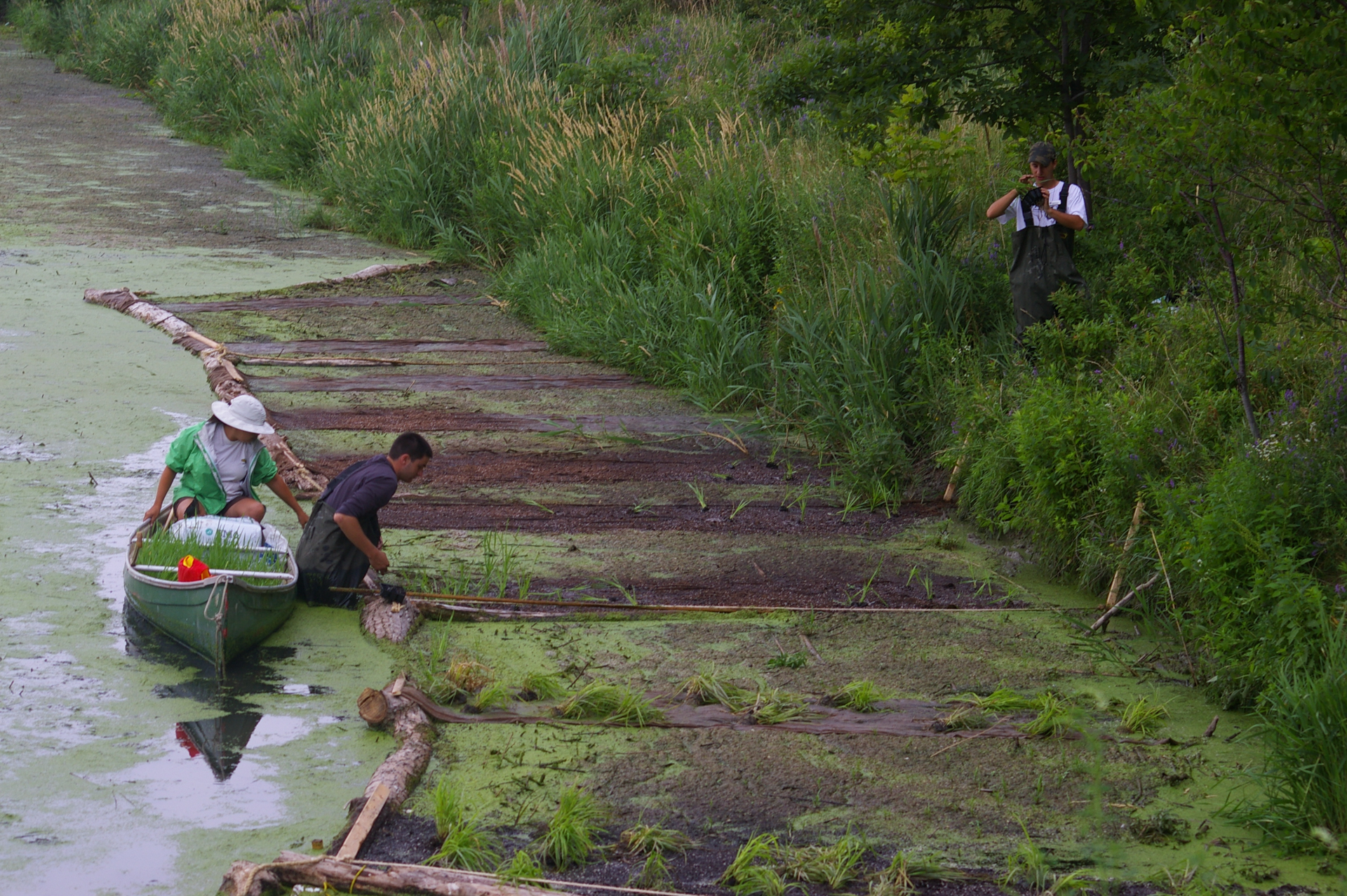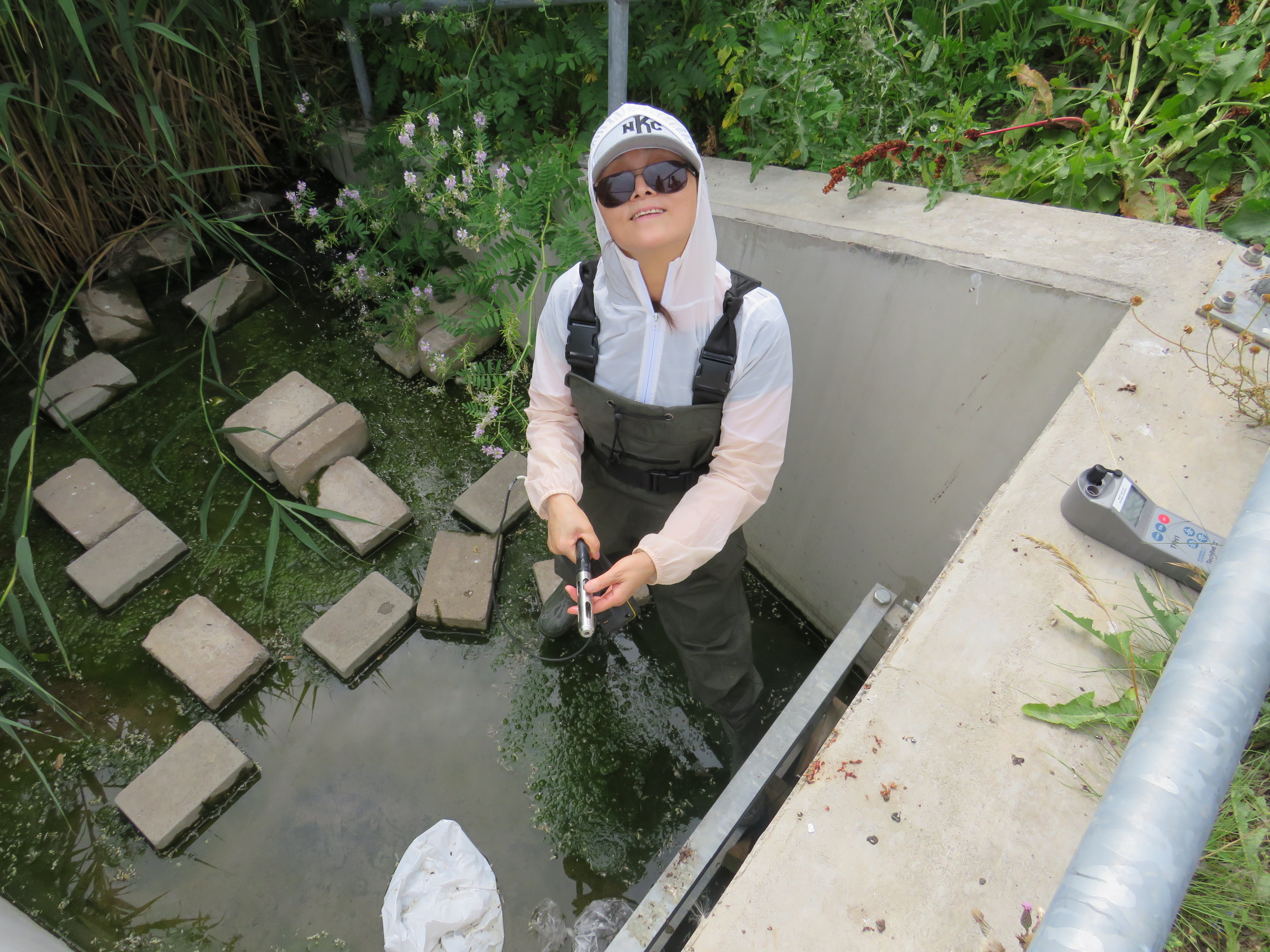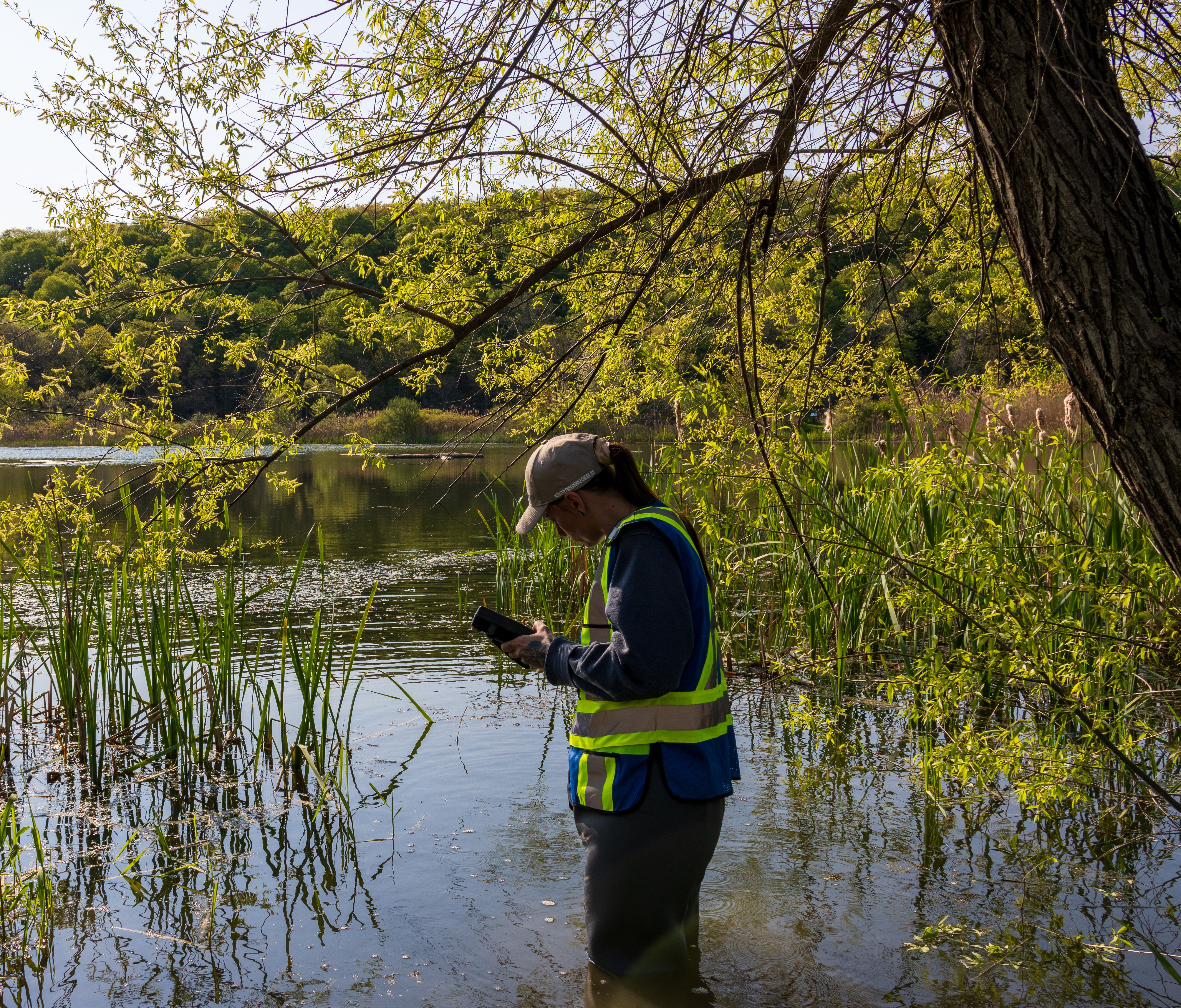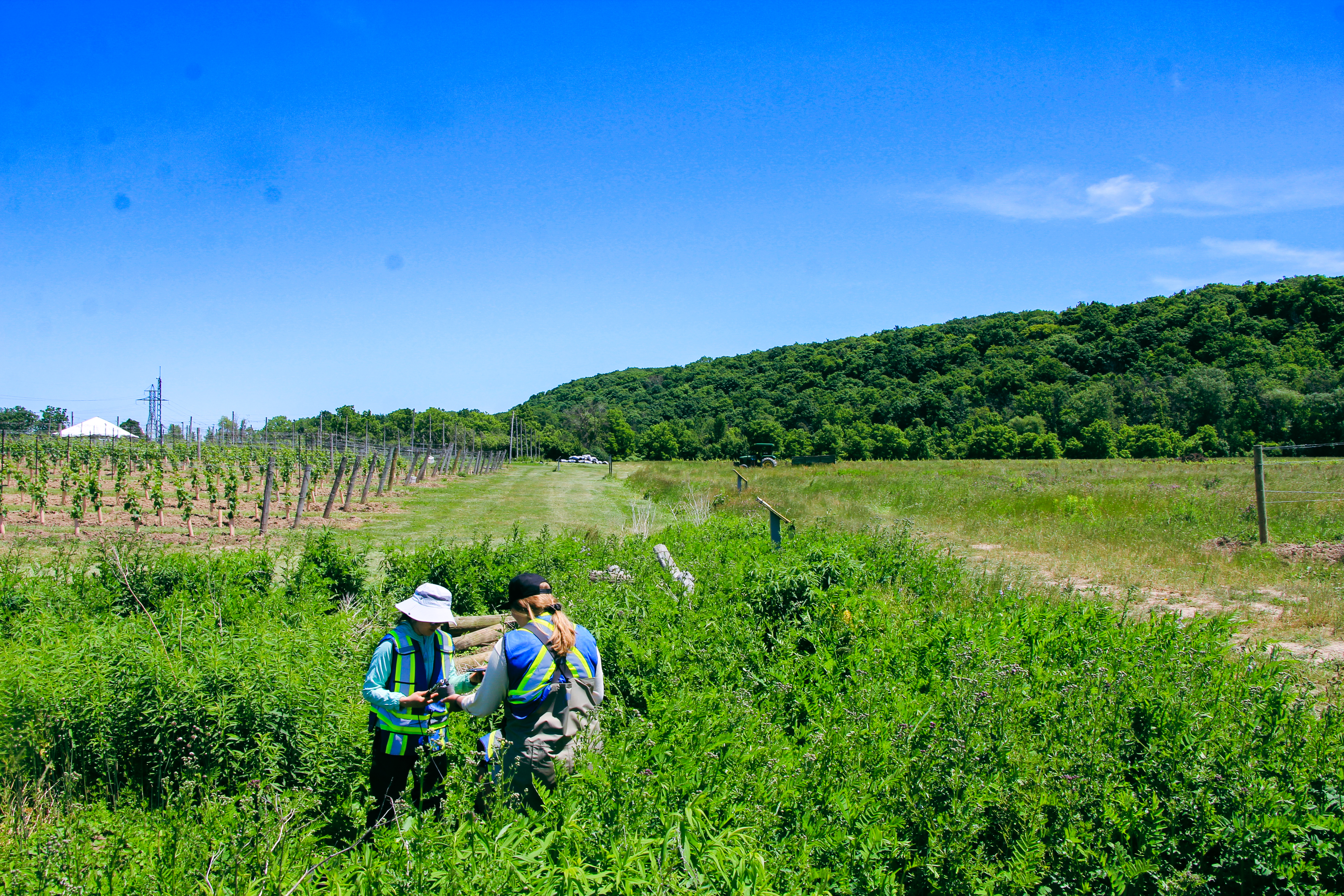Water Monitoring
Brief History

Niagara College, located in Canada, has a history of ecological restoration tied to its campuses. In the 1970s, the land that would later become part of the college and its surrounding wetland was used as a racetrack and wastewater lagoon due to the lack of a municipal sewer system. When the college was built in the late 1990s, the municipal sewer line was extended, making the lagoons obsolete. As part of the development, the college undertook the responsibility of restoring the lagoon, transforming it into an ecological site.
To maintain the health of this restored wetland, Niagara College implemented periodic water monitoring. Both the Niagara-on-the-Lake (NOTL) and Welland campuses are included in this water monitoring program. The NOTL campus, in particular, is situated at the base of the Niagara Escarpment, a UNESCO World Biosphere Reserve. This campus includes significant ecological features such as wetlands, gardens, a vineyard, and Six Mile Creek.
Since 2012, the college has actively participated in water monitoring. However, inconsistent methods initially used made it difficult to compare data across different years. To address this, a standardized protocol was developed. This standardized approach enables the collection of long-term data, helping to identify problem areas and implement accurate remediation plans. This optimization effort aims to maximize the ecological potential of the wetlands.
Please note in the summer of 2025, the locations of the North East and Centre East monitoring sites changed slightly to accommodate access to the water. During this summer the winery effluent was removed from the water monitoring test locations due to consistent lack of access to this area or presence of water.
What we do

The water monitoring initiative at Niagara College involves collecting data from strategic points within the wetland and college drainage systems. This data is recorded and analysed to produce interpretative reports. The initiative serves several important purposes:
- Raising Awareness About Watershed Health: Educates students and the community about the importance of watershed health and the need for consistent water monitoring.
- Hands-on Skill Building for Students: Provides practical, hands-on learning experiences, allowing students to apply theoretical knowledge in real-world settings.
- Aiding in Remediation Activities: Identifies problem areas and supports effective remediation efforts to improve and maintain the ecological health of the wetland.
- Aligning with Academic Programs: Integrates with various academic programs, enhancing the educational relevance and interdisciplinary learning opportunities for students.
Through these activities, Niagara College not only contributes to environmental sustainability but also enriches its academic offerings by providing students with valuable experiential learning opportunities.
What do we record?

In the water monitoring initiative at Niagara College, the physical characteristics of water from the wetland and the college drainage systems are recorded. The key values measured include:
- pH: Indicates the concentration of hydrogen ions in the water, which determines its acidity or alkalinity.
- Conductivity: Measures the water’s ability to conduct an electric current, which is influenced by the presence of dissolved salts and other chemicals.
- Temperature: Refers to the degree or intensity of heat present in the water, which can affect both chemical reactions and the living organisms in the ecosystem.
- Total Dissolved Oxygen (DO): The amount of oxygen dissolved in the water, which is crucial for the survival of aquatic life.
These measurements help in assessing the health of the water bodies and are integral to the reports generated for the monitoring program.
What we measure

The water monitoring initiative at Niagara College uses the following instruments to measure various physical characteristics of the water:
- Conductivity Meter: This instrument is used to measure both conductivity and pH levels in the water.
- Dissolved Oxygen Meter (DO Meter): This device is used to measure temperature, pressure, and dissolved oxygen levels, reported in milligrams per litre (mg/L) and as a percentage (%).
These instruments ensure accurate and reliable data collection for assessing the health of the water bodies.
Range

Water monitoring over the years helps us to observe and track the physical characteristics of water, enabling us to compare the water quality against Ontario standards, ensure the wetland water remains healthy, and verify that Niagara College meets regulatory requirements.
For the water quality to be considered healthy:
- pH Range: An ideal pH range for a healthy watershed is between 6.5 and 8.5. A pH result outside this range indicates a potential chemical or biological change that could harm the ecosystem.
- Temperature: The water temperature should not be too high or too low. Extreme temperatures can stress aquatic organisms and reduce overall productivity. Maintaining an optimal temperature range is crucial for the health of the ecosystem.
- Dissolved Oxygen (DO): The DO levels should range between 0 mg/L and 18 mg/L. A decrease in DO can occur due to increased water temperature or higher biological oxygen demand. Adequate DO levels are essential for the survival of aquatic life.
- Conductivity: High conductivity indicates a high presence of salts in the water, which can be problematic in a freshwater wetland and in water discharge. Maintaining appropriate conductivity levels helps preserve the quality of the freshwater ecosystem.
By regularly monitoring these parameters, we can detect changes or issues early and take appropriate remediation actions to ensure the continued health and stability of the wetland ecosystem.
Opportunities:
The Office of Sustainability at Niagara College invites students and volunteers to participate in the water monitoring program, offering valuable hands-on experience in water monitoring, data entry, and equipment handling. Water monitoring activities open to everyone can be found on the NCEngage app and website.
For more information e-mail [email protected].